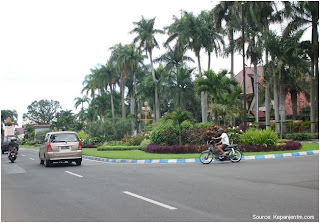Nine
years have elapsed before members of Regional Representatives Board (DPD) one day in October this year realized that
they had interpellation right to question the government if they did not agree
with its policy.
But
what a surprise, the first
interpellation right they use after so many years kept silent was about the Low
Cost Green Car (LCGC), not the strategic issues related to the regional
autonomy, say, for example, the creation of new autonomous regions.
Spearheaded
by A.M Fatwa, a regional representative from Jakarta, around three fourth of 132
DPD members agreed to use such right. They argue that the infrastructure is not
enough to support the existing cars. The rich people will have greater
possibilities to buy LCGCs and rent them to poor people.
DPD
members thought that they find a better solution by proposing to the government
to sit down with rich people and discuss how to settle the problem of mass
rapid transportation, rather than enabling common people to buy LCGCs.
How
come that those distinguished DPD members have such mediocre arguments? Don’t
they know that Indonesia is not Jakarta?
More than half of the car population is concentrated in the Capital city. Look
to the street in small cities outside Jakarta, look to the road in outer
islands that the majority of DPD members represent, aren’t they all deserted?
Those
grim conditions are caused by the fact that the cars sold in the market are too
expensive so that most people cannot afford to buy. Of course, the policy cannot accommodate
common people to buy such LCGC but at least it increases the opportunity to
buy.
Irman Gusman, DPD head, said that the interpellation was raised
because he got a lot of questions from people in small cities. His argument seems
paradoxical. If those
notable members are fair, they should question expensive cars circulating in
Jakarta and welcome instead the cheap cars.
Actually there is no need to respond such dim questions but constitutionally the government should answer the interpellation. The President, represented Coordinating Minister of Economics, Hatta Rajasa, Minister of Industry, MS Hidayat and Minister of Transportation, E.E. Mangindaan, responded that the policy of LCGCs is enacted to anticipate the upcoming ASEAN International Free Trade in 2015 and to meet the need of common people to have a car.
LCGCs will not become the causal
factor of a traffic jam because the cars will be distributed mainly in a small city
and villages where the cars are still very limited and traffic jam never
happens. Besides, the government has taken priority to develop public
transportation in six metropolitan cities and buffer zones to curb the traffic
jam.
The
honorable DPD members,
Next
time you raise an interpellation, it should be the one that is more strategic and
more valuable for the regions you are represented.











